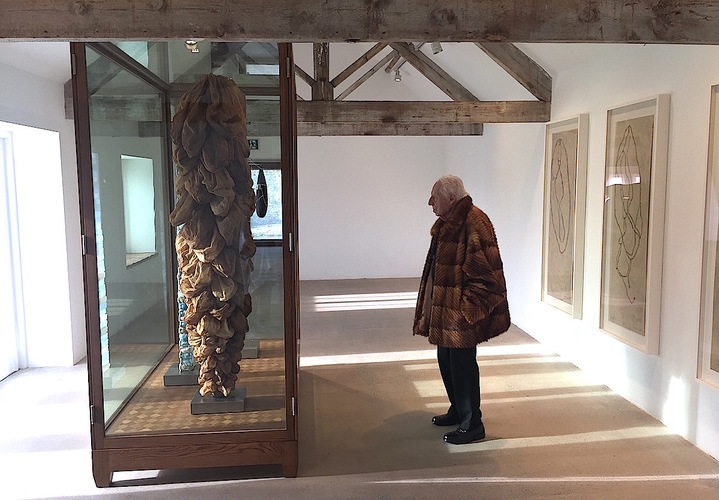I’ve just made a visit – a first but not the last, I hope – to the much talked about Hauser & Wirth set up near Bruton in Somerset. I already knew their rather grand gallery situated on Savile Row in London, where it jostles elbows, so to speak, with our city’s grandest purveyors of made-to-measure gentlemen’s suits, but this comfortably exceeded any expectations I might have had. A bustling restaurant, a good bar and a range of galleries and other spaces devoted to presentations of the most superior varieties of contemporary art. Nothing overstated. The facilities offered are housed in a big range of repurposed farm buildings, carefully low-key, with enough bare brick showing here and there to certify the original use of these constructions. To run them, there is an enthusiastic, helpful and charming young staff. When I visited, the place was, despite its location remote from any big city, bustling with visitors. Not surprising – it’s well worth a five-star rating on any culture-vulture web-site.
A bustling restaurant, a good bar and a range of galleries and other spaces devoted to presentations of the most superior varieties of contemporary art.

The current exhibition, which runs until 1st January, is a presentation of work by the indomitable Louise Bourgeois – the artist who was the first to be given a Turbine Hall commission when Tate Modern first opened its doors to the public in the year 2000. It was a prophetic choice, given Tate’s consistent support of women’s art in the years that have followed. Some elements in the presentation are familiar from what was shown then. For example, you enter the show by passing under a huge and rather menacing metal spider.
Much of it, however, consists of Bourgeois’ much less familiar works on paper. Chiefly a series of huge prints – to be precise, large etchings – not usually a form of art that is presented on this kind of scale. The exhibition is called Turning Inwards, and the forms seen in the etchings often seem in one way or another intestinal, though the titles given to individual pieces don’t make this too jarringly specific. They are works made at the very end of the artist’s long life. She lived to be nearly a hundred.
When one looks at the careers of major female Modernist artists one is often struck by the fact that they tended to develop in isolation, or at least on the periphery, rather than being core members of major artist groups. There are no really significant female Fauves or Cubists, no female Italian Futurists (though a few Russian ones), and even among the core Surrealists, the Abstract Expressionists (though the AbEx show now a the R.A. makes some attempt to prove the contrary), or the Pop Art movement, women don’t seem to have played an absolutely major role.

The major female names in the history of American Modernism often followed fairly isolated trajectories; this was true of Georgia O’Keeffe and of Louise Nevelson, for example, and it was also true of Bourgeois. She was born French, migrated to New York when she met and married an American husband, Robert Goldwater, and had three sons. It was only after Goldwater’s death in 1973 that she started to emerge as an artist to be reckoned with. She was at that time in her fifties. During her marriage, she made the transition from European culture to something subtly but recognisably American – but not American in the fashion of a Pollock, a Jasper Johns or an Andy Warhol. It is somewhat easier to find parallels for her mode of expression in certain 20th-century American women poets – not in the work of Sylvia Plath (Bourgeois lacks both the anguish and the inherent psychic disharmony), but maybe in writers such as Anne Sexton or Adrienne Rich.
As the show at Hauser & Wirth Somerset makes clear, the subtle movements of her own interior life meant much to her. The big prints are both emblems and self-explorations, and they show that she continued that exploration well into extreme old age.

